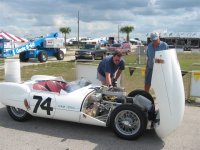David_K
Jedi Hopeful
Offline
What kind of horsepower increase will I be looking at with a mild porting job on a BJ8 engine? The compression, cam, and valves will NOT be changed. I'm also hoping to see a MPG increase at steady cruise on the interstate.
I calculated it out and a shop I'm looking into having the head sent to has quoted me $650 for porting, $175 for a valve job, and the guides, seats, and springs will be extra. I think this will end up costing me $1100 in the end.
I calculated it out and a shop I'm looking into having the head sent to has quoted me $650 for porting, $175 for a valve job, and the guides, seats, and springs will be extra. I think this will end up costing me $1100 in the end.

 Hi Guest!
Hi Guest!

 smilie in place of the real @
smilie in place of the real @
 Pretty Please - add it to our Events forum(s) and add to the calendar! >>
Pretty Please - add it to our Events forum(s) and add to the calendar! >> 

